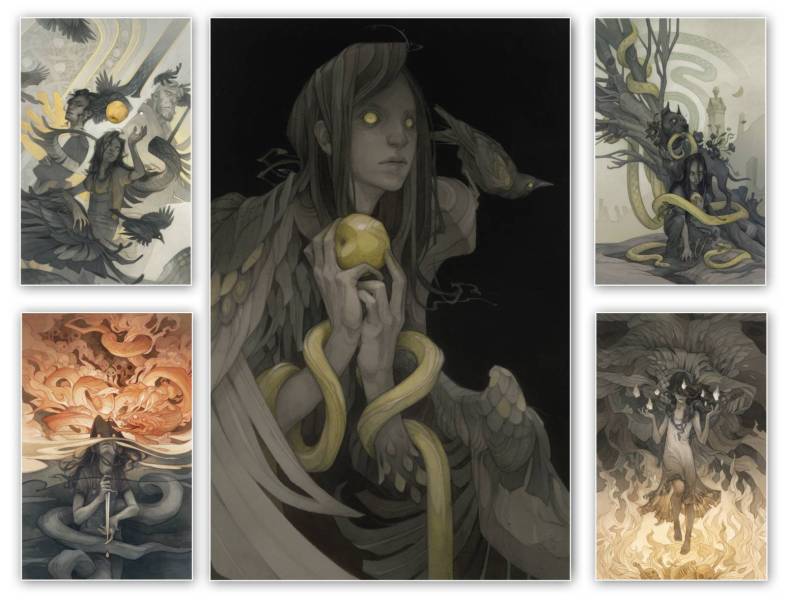
Series cover art for Mike Mignola’s Castle Full of Blackbirds.
Creating artwork for a series is inherently more fraught than creating a one-off illustration. You can imagine starting a series of illustrations as stepping into a long hallway lined with a thousand open doors, each leading to a room full of wonders. So… which doorway to step through first? The prospect of choosing a door is exciting… but also perilous.
It’s probably the most important decision you’ll make over the entire course of the project. Unfortunately, it’s also the one you have to make with the least information; the you that will finally exit the hallway at the other end, visibly grizzled and battle-scarred, will have a much clearer picture of the true nature of this project, a lot more experience of what works for it and what doesn’t, and a lot of very strong opinions about which door your fresh-faced self should have chosen right out of the gate. This is because…
Decisions create limitations
No matter which door you choose for the first illustration of yours series, its selection will slam shut a great number of those doors. If your first illustration is a depiction of a literal scene from the narrative, you will find it very difficult to justify a sudden switch to the allegorical or abstract. If Paintings 1 through 5 are close-up character portraits, your sudden switch to an atmospheric wide shot of the setting for Painting 6 is going to feel confusing and disjointed if you haven’t found some way of finessing the transition.
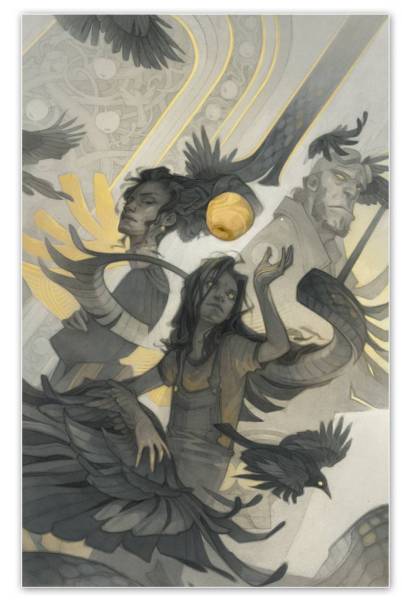
Final cover for Castle Full of Blackbirds #1
Equally bedeviling, each illustration you create empties one of the remaining rooms of its most valuable contents. Whether it’s something exciting (a unique camera angle that no artist has ever used before!) or reliable (your go-to sexy hero pose). This is because…
A series demands variety
The sort of thematic and visual recycling that can fly under the radar for years if you’re only painting standalone illustrations will become abruptly, embarrassingly noticeable in the context of a series. Even otherwise benign details can feel uncomfortably repetitive alongside a handful of their kin (“Why are the swords always pointing to 10 o’clock? Why is the redhead always in the middle?”)
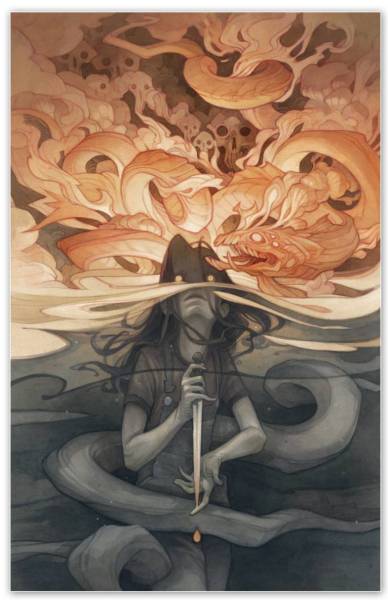
Final cover for Castle Full of Blackbirds #2
This means that the pressure is on to pick out the most unique THING (whether it’s subject matter, or one of the more intangible technical elements of imagemaking) from each room… often without knowing exactly what’s behind the doorways ahead. (You probably wouldn’t have chosen to paint the singing penguin from Room 4 if you’d realized that Room 17 contained nothing BUT singing penguins).
…but it also demands consistency
Amidst this struggle to make each illustration a standout, there must be a common thread to unify the images; this common thread, like so much else, is something that must be decided by that worst version of yourself: the unwary naïf who has bumbled their way into a hallway of seemingly infinite possibilities and can’t wait to get started on that shiny new project.
What will tie these images together – a shared color palette? A consistent choice of camera angle? An overarching mood? Or will you try to tell a story that unfolds across the series, each piece serving as the seamless transition point between the one that came before it and the one that will come after it? (Better start planning, kid.)
You could rage against the machine by wholeheartedly committing to experimental randomness – each piece a wonder of invention, with never a repeated visual motif! – but this metaphor isn’t giving us a magician’s hat; it’s giving us a hallway. Eventually, you are going to run out of rabbits.
And worst of all…
When you’re working with a series, there’s always going to be a WORST image. And counterintuitively, if you’re very, very lucky, it will be the first one. Your successes within a series will always be tainted by the way in which they highlight your failures… or, if we’re being more kindly, your “lesser successes.” (Now is an appropriate time to come to terms with hating your art.) But even worse than THAT is the fact that…
At some point, you will stop caring
Fucks, like the doors in your metaphorical hallway, are a limited resource. Eventually you will run out of them, and start to wonder if maybe AI-generated art just might be the future of illustration after all!
How quickly you will run out of those fucks depends on a lot of variables — your temperament, your level of passion for a particular project, and the many competing demands that life will inevitably make on your time, attention, and energy. It could be forty paintings… or it could be four.
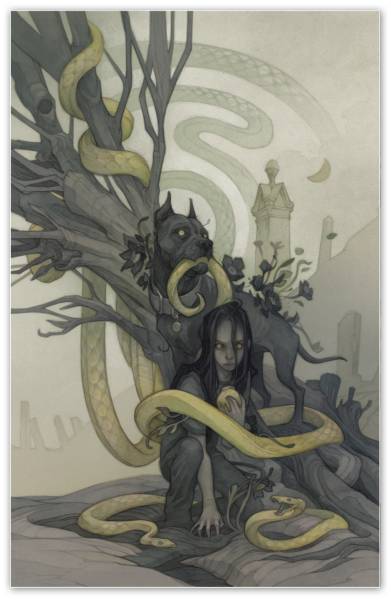
Final cover for Castle Full of Blackbirds #3
Unfortunately, you are unlikely to have a precise understanding of the limits of your own supply until you’ve reached the bottom of it — especially if you’re new to this whole “series” thing.
So, what to do?
Allow yourself a dry run
First of all, don’t jump into this volume of work blind. If you’re used to doing one-off illustrations, but are hoping to take on series-based work in the future – whether it’s a solo gallery show, a comic book series, or anything else that will demand an interconnected body of work – do yourself a favor by starting to build that skill NOW, before your professional reputation is on the line. This is where self-directed projects shine – you’ll get to tour that series hallway, with all its frustrations and slammed doors, without the added complications of deadlines and input from the marketing department. You’ll also get a better idea of where your tipping point into “my field of fucks is barren” hits, which is an important element of my second piece of advice:
Know yourself
Working on a series will magnify everything about who you are as a working artist: your time management skills, your ability to churn out ideas and finals on a schedule, your attention span and your level of interest (or lack thereof) for the project itself.
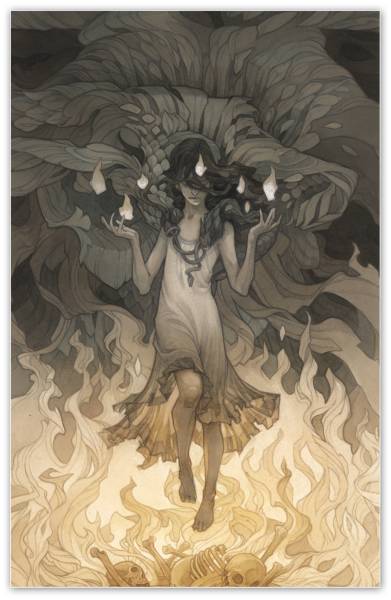
Final cover for Castle Full of Blackbirds #4
For this reason, you should magnify your own concerns and demands in equal measure. Be pickier than usual about only saying yes to projects that excite you, making absolutely sure that the pay rate is acceptable to you, and allowing for more time in your calendar to account for the unexpected delays (and predictable fatigue) that are that much more likely when working on an extended timeline. Turning down a project that isn’t quite right for you is always a bummer – but not as much of a bummer as spending the next couple months, the next couple years, maybe even THE REST OF YOUR LIFE (hey, things are uncertain out there) on a project that doesn’t bring you some happiness artistically, socially, or financially.
And finally, that all-purpose chestnut:
PLAN AHEAD.
This will look different depending on your process, and the project at hand – it could be thumbnailing the whole series before you start painting the first cover; arranging paint swatches on the wall; taking notes on all the prequels even if you’ve only got the manuscript for the first book – whatever you have to do to get yourself out of the single-painting mindset, and account for the scope of all the images to come. However you like to plan, make sure you actually do it! You can’t be too careful in choosing your first door off of that hallway of possibilities.
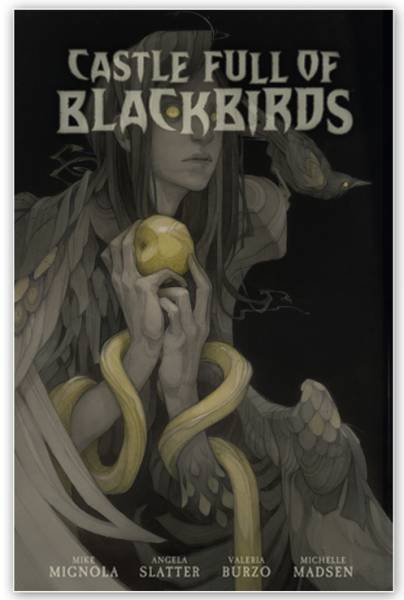
The Castle Full of Blackbirds hardcover collection



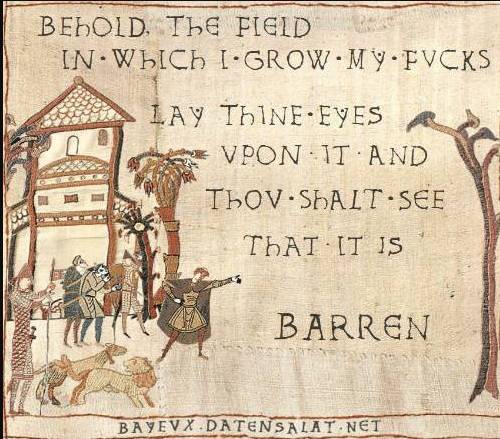
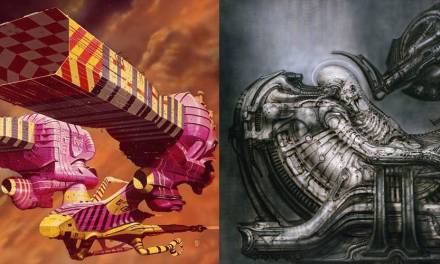
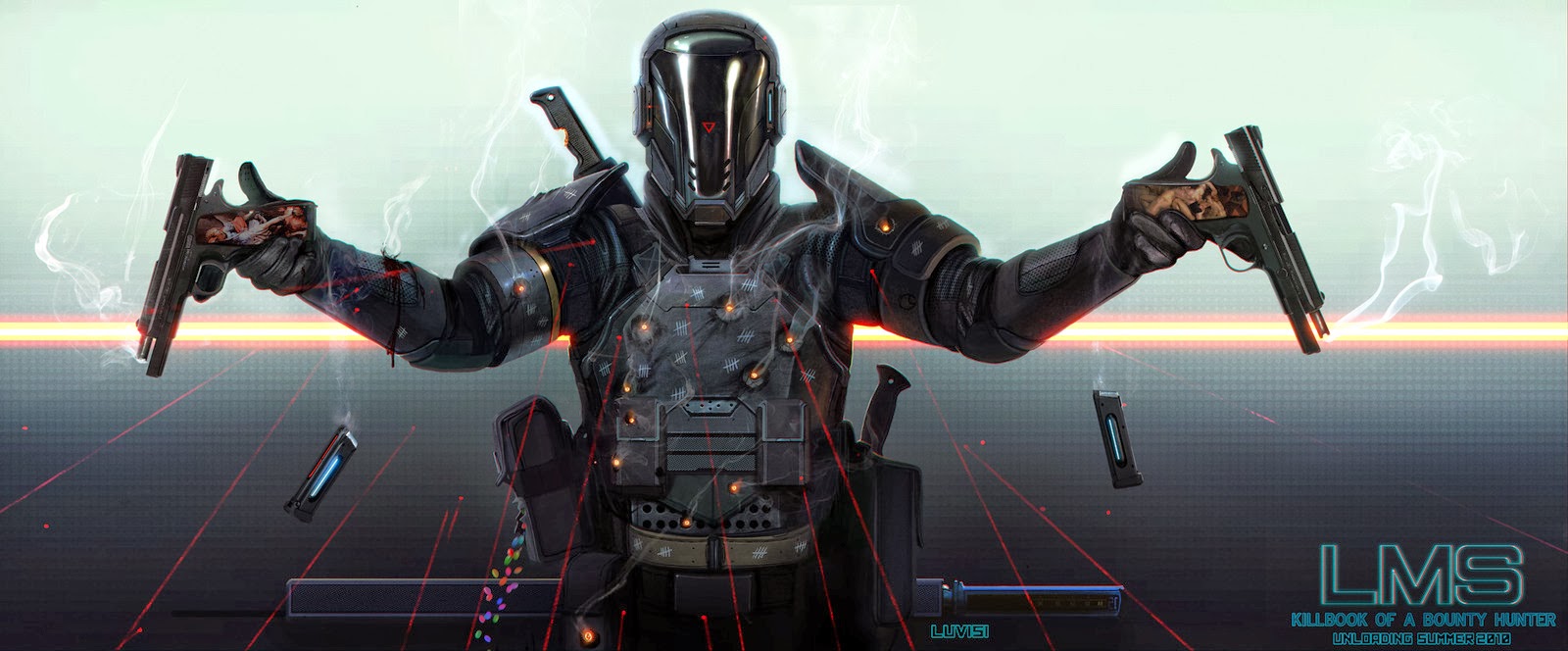
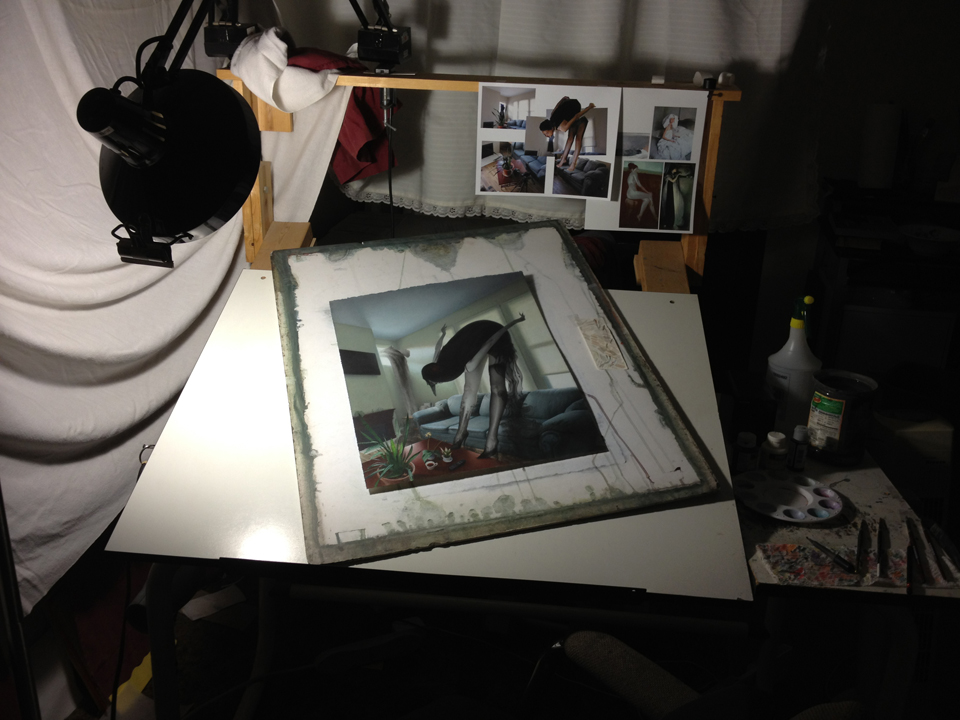
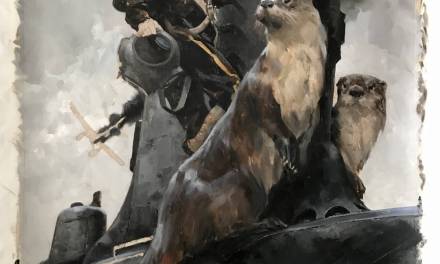
Too bad this information will be useless in 5 years thanks to AI
I think the complexities of judgement involved in this kind of work represent one of the many reasons AI isn’t a 1:1 replacement for thinking artists.
Plus, is the kind of client who sees an interchangeable robot intelligence that can be milked for unlimited regurgitated content at a discount rate and thinks “hey, this is just like artists, only better!” really the kind of client you want to be stuck working with?
This is such beautiful work. I’m finding myself meditating quite a long time on the qualities of every curve.